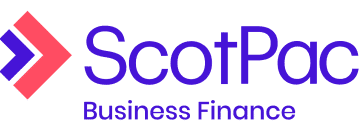Home > Business Loans > Business Line of Credit Loans
Business Line of Credit Loans
Is a line of credit loan right for your business? Compare your finance options all in one place with Savvy.
Author
Savvy Editorial TeamFact checked








Is a business line of credit an option if I need loan finance?
It is an option for borrowing money, although it’s not a loan in the traditional sense – rather, it’s one of the various forms of business credit. A line of credit is an amount of funds that your lender has set aside to be available for your small business. This money can then be used as you have need and repaid when you have funds available.
If your business has a line of credit set up, it can provide incredibly fast and easy access to extra funds from a lender, without any need for loan applications or paperwork. It’s much more like a credit card than a loan.
The most significant drawback of a line of credit, however, are the interest rates – which are generally a fair bit higher than the rates you’d get on a business loan. This means that while it’s a good choice for covering sporadic, short-term expenses, it’s not an ideal solution when it comes to long term lending – so it’s not an ideal substitute for a business loan.
How does a business line of credit compare to traditional loan finance?
There are a number of key differences between a line of credit and traditional loan finance, each of which can make them a better or worse choice for a small business.
- Provides funds at need – One of the great strengths of a business line of credit is how easy the funds are to access. There’s no approval or application process – the funds are simply available for you to use them as you need them. But unlike borrowing a lump sum with a business loan, you’re only paying interest on the money you’re currently using.
- Can be repaid / cleared whenever you choose – Unlike many traditional business loans (which can often charge fees for early repayments), there’s no restrictions on repaying what’s owed on a business line of credit. You can pay the money back – up to the full amount – as soon as the funds are available, without any fees for doing so.
- Impacts credit more directly – One downside is that a business line of credit has a much more direct impact on your business’s credit rating. The application process for a business loan will put a slight dent in your credit rating, but after that it only really has an impact if you start missing repayments. Credit facilities like a line of credit have a much more direct connection with your credit rating, and having a large amount owing on a business line of credit can have quite a negative impact on your credit score.
In general, a line of credit is best suited to short term expenses (unexpected or not) which are paid off relatively quickly. For any large, long-term expense, you’re generally better off looking into traditional loan finance.
If you decide that a business loan is the way to go, Savvy’s a great place to start your hunt. On the Savvy website you can compare a variety of loans from a range of top Australian lenders, and find one suited to your business.
Types of business loan
The most common type of business finance, unsecured loans enable businesses to access the funds they need without attaching an asset to the loan as security. Some lenders may allow you to borrow up to $500,000 and, because there's no collateral, offer same-day approval.
If your business already owns valuable assets, such as property or expensive equipment, you may choose a secured business loan instead. These loans may increase your borrowing power beyond what an unsecured loan can offer and, crucially, typically come with lower interest rates.
Business loans don't always have to be worth hundreds of thousands. If you're operating a small business and need a boost to help you keep on top of your expenses or expand your company, you may be able to take out a loan starting from as little as $5,000 and unlock further capital.
Just because you don't have all the required documents for a standard business loan doesn't mean you're out of options. Low doc finance enables you to use alternative documentation, such as other business financials, in the application process to access the funds you need.
A commercial line of credit allows you to draw from your loan account whenever your business needs access to their funds, instead of managing a lump sum and repaying it like a regular loan. This can add flexibility to your finance arrangement, providing money when you need it.
Invoice finance presents another option to business operators looking to free up cash through outstanding invoices yet to be paid by their customers. Your invoice finance can either be invoice discounting or factoring, which present different options when it comes to your invoices.
A common reason for seeking out a loan is to purchase commercial equipment. You can do this either with an unsecured arrangement or one with the equipment itself as collateral, with the latter potentially increasing your borrowing power and lowering your interest rate.
With this finance, when your business purchases product, your supplier provides an invoice which you send to your financier and pledge to repay by a set date. From there, your supplier sells the invoice to your financier at a discounted rate, while you repay the full amount to your financier.
Under an inventory finance agreement, your lender pays your supplier directly for inventory, which allows it to be signed off and sent to you. From there, you can pay off your debt within a pre-determined period to your lender, which may be longer than the regular debtor period.
An overdraft facility is attached to an existing financial account belonging to your business, such as a transaction or savings account, and enables you to borrow up to a set limit after the account’s balance reaches zero. These overdrafts are repaid with interest, but only on what you use.
You may simply be in a position where your business needs a boost to its cash flow. If this is the case, there’s a range of stop-gap solutions which may be suitable for your situation, from standard unsecured loans to specialist cash flow loans, invoice finance or even an overdraft.
Why compare business loans through Savvy?
100% free service
It won't cost you a cent to compare a range of business loans through Savvy, enabling you to come back at any time.
Reputable lending partners
You can compare business loan offers through a range of trusted Australian lenders, giving you more confidence in the process.
Online comparison process
You can fill out our simple online form to generate business finance quotes tailored to your business' needs in minutes.
Top tips for using a business line of credit well
Plan to pay things off quickly
A line of credit can be a good solution for sudden, urgent expenses. But it’s best to keep it as a short-term stop gap solution. Plan to pay off expenses on your line of credit promptly where possible.
Watch your balances
A line of credit can sometimes be a little too easy to access – it's possible to lose track of your spending, and potentially even get close to your credit limit – which is bad for your credit rating and can have significant fees if you go over. Keep a close eye on the amount owing on your line of credit when it’s in use.
Don't use it for operating losses
If your business finds itself running at a moderate loss at one point, don’t try plugging the gap with funds from a line of credit. If you do and things don’t turn around quickly, you can lumber yourself with a lot of high-interest debt and make the problem much worse.
Have a backup plan
It’s good to have a backup plan for how to quickly clear the debt on your line of credit. Partly to find a lower interest solution if you’re struggling to clear the debt promptly. But also because it is possible (on rare occasions) for a lender to cancel a line of credit and require any remaining debt to be promptly repaid.
Frequently asked questions about business lines of credit
There are many similarities, but the key point of difference is that while a business overdraft is a facility added to an existing bank account (allowing you to keep withdrawing funds once your balance goes into the negative), while a line of credit is a separate account. This means a business overdraft can be more convenient as it uses your current accounts. But it can also be a lot easier to lose track of spending.
They can be either. By default they’re often unsecured, but many lenders also allow you to arrange one of your assets to act as collateral on a business line of credit, often improving both your interest rates and your credit limit (if you want that extended – many small businesses prefer to deliberately limit their available credit).
Generally, you’ll get a substantial fee and it ‘ll likely be noted on your credit record. It’s a good idea to avoid this if possible
Business credit is incredibly versatile, and can be used for almost any business purpose – you don’t actually need to tell your lender what the money is for with a line of credit. Although it’s not generally regulated, you should still be using it for business purposes. Otherwise, you’re likely violating the terms of your agreement with the lender.
Many lenders do charge a fee on a line of credit that’s not in use – to cover their administrative expenses keeping those funds in reserve for you. The fees vary between lenders, so it’s worth checking what your lender charges when setting up the line of credit in the first place.
Yes, this is quite common. It’s also not unusual to take out one loan to clear a number of debts, including a line of credit. This is called debt consolidation, and is normally a pretty good idea – you can generally get better rates on a loan than on a line of credit, so you’re lowering the overall cost of the debt. It’s best to be clear with your lender that this is the purpose of the loan, as lenders can be wary of offering an additional loan to a business with multiple outstanding debts.
Inventory finance, or floorplan finance, is another option available to businesses who wish to take advantage of a line of credit in helping them add flexibility to their current stock purchase arrangement. With inventory finance, a business applies to have funds released to their supplier, who in turn fulfils their order and ships the required stock. Once the business is able to sell their product, they can then repay their lender. This is a line of credit which can remain open as long as it remains viable.
Still looking for the right finance for your business?
Explore a range of business loan options suitable to your financing needs and apply online through Savvy today.
